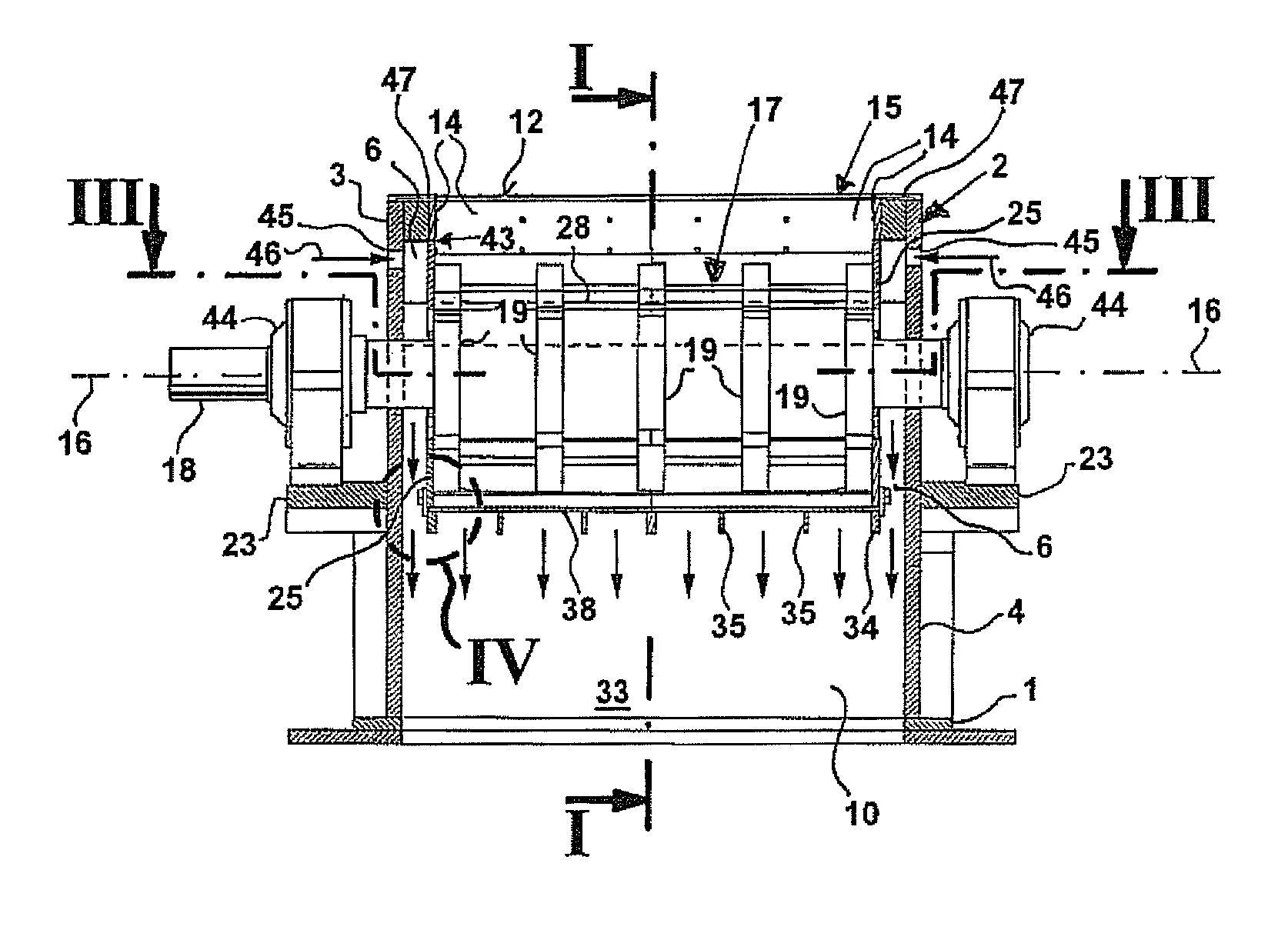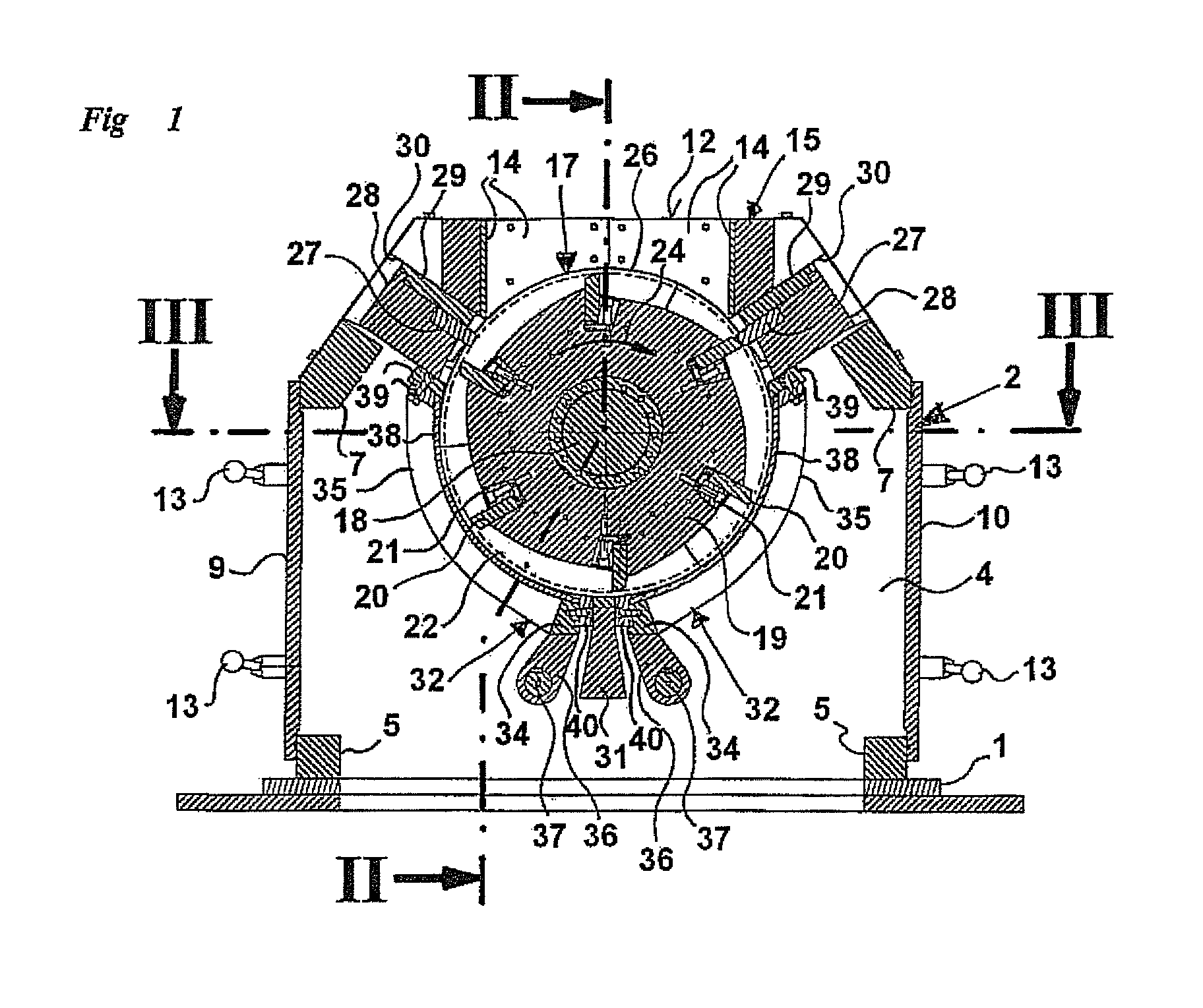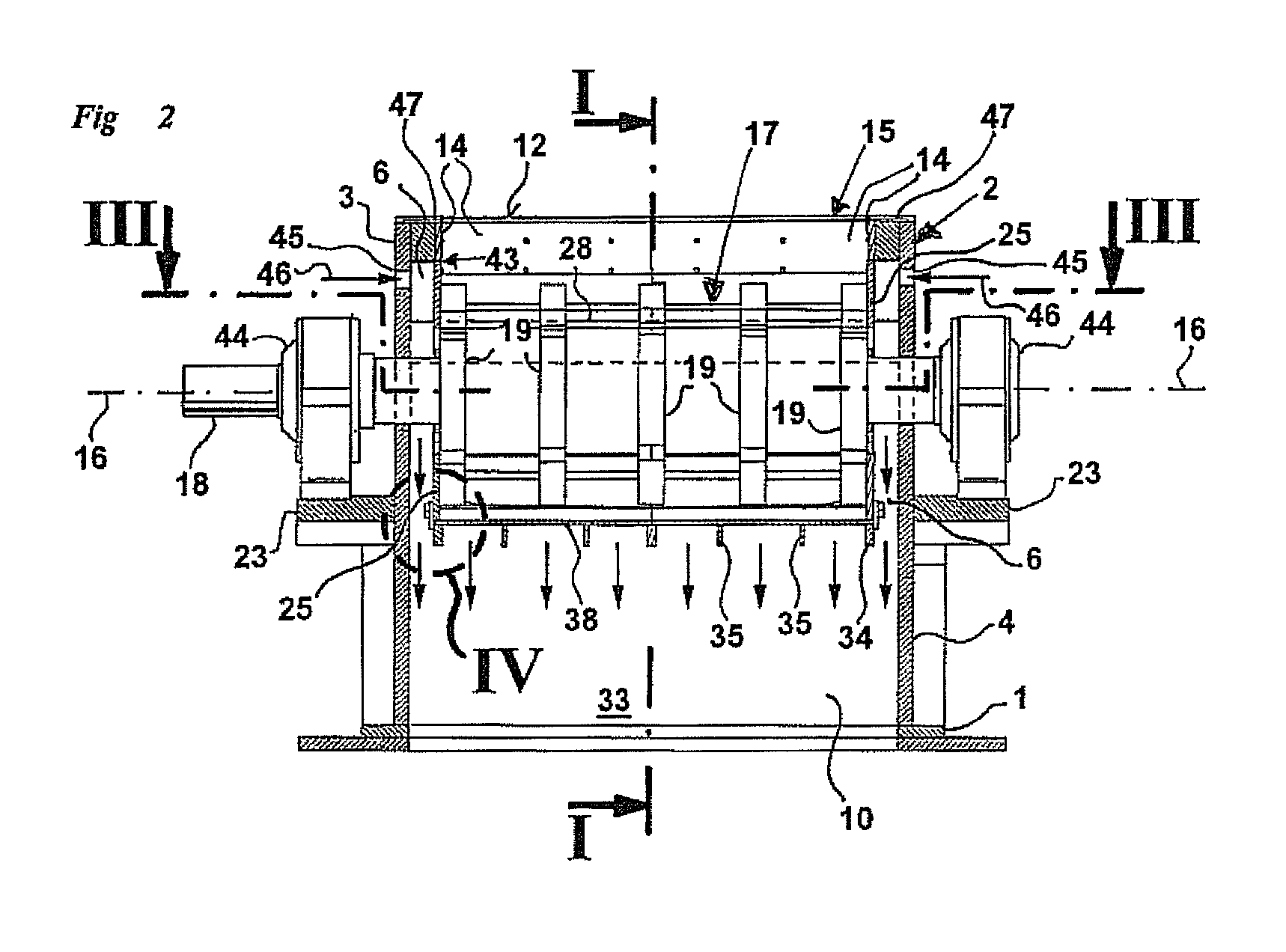Device for comminution of feed material
a technology of comminution device and feed material, which is applied in the direction of cocoa, solid separation, grading, etc., can solve the problems of wear on the inside of the housing wall, the attachment of rotating machine parts to stationary machine parts is problematic, and the friction is considerable at the stationary transverse wall, so as to reduce operating costs and ensure the accessibility to the interior of the housing. , the effect of reducing the operating cos
- Summary
- Abstract
- Description
- Claims
- Application Information
AI Technical Summary
Benefits of technology
Problems solved by technology
Method used
Image
Examples
Embodiment Construction
[0030]The more precise structure of the inventive device is evident from FIGS. 1 through 4, which show a cutting mill. The cutting mill has, resting on a substructure labeled 1, a housing 2 which is composed essentially of two opposing, plane-parallel transverse walls 3 and 4, whose outline is rectangular in the bottom region and trapezoidal in the top region (FIG. 1). The transverse walls 3 and 4 are structurally load-bearing parts, which are frictionally connected to one another at their base region by one longitudinal spar 5 on each side. In the transition region between the rectangular region and the trapezoidal region, longitudinal spars 7, which likewise are axially parallel, reinforce the housing construction, with the overall result of a stiff supporting frame. Each of the longitudinal sides of the housing 2 are closed off by longitudinal walls 9 and 10, which can pivot about a vertical axis by means of hinges 11 after the lock 13 has been released in order to ensure accessi...
PUM
 Login to View More
Login to View More Abstract
Description
Claims
Application Information
 Login to View More
Login to View More - R&D
- Intellectual Property
- Life Sciences
- Materials
- Tech Scout
- Unparalleled Data Quality
- Higher Quality Content
- 60% Fewer Hallucinations
Browse by: Latest US Patents, China's latest patents, Technical Efficacy Thesaurus, Application Domain, Technology Topic, Popular Technical Reports.
© 2025 PatSnap. All rights reserved.Legal|Privacy policy|Modern Slavery Act Transparency Statement|Sitemap|About US| Contact US: help@patsnap.com



